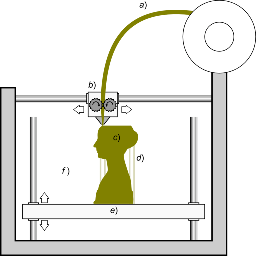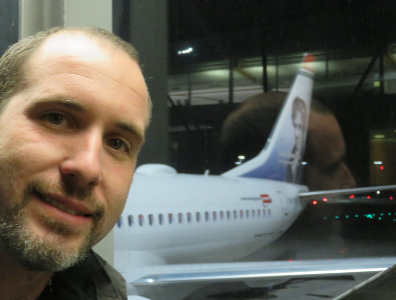
Logifaces

In this 3D puzzle, the main goal is to fit the triangular pieces in the diagram so that the edges of adjacent pieces coincide with each other. To drag the pieces, use the center circle in each triangle and to rotate them just click inside. Both movements must be done in the 2D window. The 3D visualization can be done in different perspectives by keeping the right mouse button pressed in the respective representation. The Game is inspired by the original [url=https://www.logideez.com/logifaces/]logifaces[/url].
adapted version
How to use AR on your phone

Download the GeoGebra Augmented Reality App to your smartphone. You find instructions on how to do that here: [url=https://www.geogebra.org/m/jhcywuqw]https://www.geogebra.org/m/jhcywuqw[/url][br][br]Open the app and search for a small round button above the blue part of the app that says AR - select that round button![br][br]Check out the floor slowly, tap on your phone in case the app tells you that a floor was detected.[br]You can zoom using your fingers on the screen of your phone!
About 3D Printing
What does 3D printing mean?
3D printing is a technology for additive manufaturing. In contrast to eg. CNC milling, there is no material taken away to produce a part but material is added until a part is built.[br]It can be compared a bit to the difference between a sculpture where a person is carved out of a rock like Michelangelos David in contrast to a snowman where snow is collected in balls until a hat and a nose can be attached.[br]Material is usually added in layers, like a cake often consists of layers that are connected by some cream. For 3D printing, the layers can be connected in different ways, regarding on the technology.[br]
How old is 3D printing?
For many people, 3D printing is a very new technology which they only discovered recently. However, the for some surprising truth is that 3D printing is a rather old technology. One technologiy - Stereolithography - was developed in 1981 and patented in 1984. The first program for developing 3D models was available since 1983 meaning it is even older than the World Wide Web which was developed in 1989.[br]In fact, 3D printing is already used for prototyping quite often in the industry. It was just not widely used by end users as of yet.[br][br]
Why is 3D printing getting more popular?
In the year 2009, the patent for the Fused Deposition Modeling technology expired. As a result, enthusiasts especially from the field of mathematics started to develop cheap versions of machines using this technology. The now cheaper machines lead to a dropping of prices from 20.000€ and above to only a few hundred within only a decade for really affordable machines.[br]Other patents expired in the last years allowing more affordable machines as well.[br]Not only did prices get more affordable, also the technologies themselves developed and gained better quality by the advent of using 3D printing for the quick production of items or prototypes. And as 3D printing is now more in the focus, more interesting fields like sophisticated materials or new fields of usage open up.
Technology Overview
Technologies can be cathegorized by their used materials and the way they add each layer of material to existing hardened material. Materials cover powders, liquids, endless filaments, granulates, and more. What they all currently share: a layer of material each is hardened and fused with another layer of material until an entire item can be taken out of the machine.[br][br]
FDM/FFF - adding layers until an item is produced

In FFF, a filament which is an endless material string [b]a)[/b] of a thermoplast material is transported to a head that heats up the material [b]b)[/b] and then melts and extrudes it through a nozzle layer per layer [b]c)[/b]. Often, the platform also moves [b]e)[/b]. This technology needs support structures [b]d)[/b] at certain angles to avoid falling layers. Image by Scopigno R., Cignoni P., Pietroni N., Callieri M., Dellepiane M. (2017). "[url=http://vcg.isti.cnr.it/Publications/2017/SCPCD17/DigitalFabricationForCH.pdf]Digital Fabrication Techniques for Cultural Heritage: A Survey[/url]". Computer Graphics Forum 36 (1): 6–21. [url=https://en.wikipedia.org/wiki/Digital_object_identifier]DOI[/url]:[url=https://doi.org/10.1111/cgf.12781]10.1111/cgf.12781[/url].
FDM/FFF - Fused Deposition Modeling/Fused Filament Fabrication
The 3D printing technology which is very affordable and widely available is FDM or FFF which works basically like a glue pistol adding material layer per layer through a nozzle. The technology was developed by S. Scott and Lisa Crump who were part of the company Stratasys. The company Stratasys still holds the patent of the name FDM, thus the RepRap movement - a group of enthusiasts with mostly a mathematical background - created the name FFF which can be used without constraints.[br]This technology uses so called thermoplasts as material. A thermoplast is a material which melts when heated up, is then squeezed through a nozzle and afterwards hardens when cooling down. Often, those [br]thermoplasts are sold as filaments, long strings without any end in one color. [br]As explained before, each melted layer hardens in order to allow another layer to be extruded on top of the old layer. The precision of this technology relies heavily on the layer thickness and the nozzle diameter. The smaller both is, the slower but more accurate the production process is. FDM needs support material for overhangs usually bewtween 30 to 40 degrees.[br]Colors of FDM printed items have the color of the filament used. Most printers use one filament and thus produce items in one color.
SLA - Stereolithography
Developed in 1981 and patented in 1986 by Robert C. Hull, the oldest 3D printing technology uses a material that hardens when exposed to UV light by eg. a laser and is usually a photopolymer - resin is often used today as a material. This technology allows a very high precision. However, it needs to be postprocessed since the sun emits UV light leading to an ongoing hardening process turning it brittle over time. [br]Hull also developed the STL file format. The items produced have the color of the used photopolymer which is usually one color but since it has to have a coating due to the UV hardening, it can be colored afterwards. A variation is spraying photopolymer as droplets through a nozzle hardening the material directly afterwards using a UV lamp. This technology needs support since it is either produced within a liquid or [br]into air.
SLS/SLM - Laser Sintering/Laser Melting
This technology uses a powder, often a variation of Nylon and thus a bit flexible but still very robust, which is applied in layers in some kind of building space, heated up until right before melting together and [br]then shot at by lasers to heat up the material all the way up until they sinter or melt together. Afterwards, the material has to cool down and then can be dug out of the remaining material like a geologist would dig[br] out items from dust. Material only comes in Black, White and variations inbetween so usually, white material is print and the objects are then dyed to achieve colors. Support is not needed since below each layer of material is an existing powder layer of material.
Binderjetting/Inkjet 3D Printing
Just as SLS, Binderjetting uses powder as material, usually gypsum or ceramics but also metal is possible. The material is added in layers, afterwards glued together and then the item is dug out of the remaining [br]powder just as the SLS process - only without a cooldown phase. Furthermore, support is not needed and the majority of unused powder can just be reused.[br]Since the glue can be colored, this technology can produce colorful items.
About the author

[i][color=#93c47d]English[/color][/i][br]Professor at Instituto Federal do Rio Grande do Sul (IFRS) - Campus Bento Gonçalves and collaborator of Scientific Initiation Program to students awards in Mathematics Brazilian Olympiad of Public Schools (OBMEP). Graduated in Mathematics Teaching Course (2002) by the Universidade Federal do Rio Grande do Sul (UFRGS) with master in Mathematics (2010) by the same institution, where work as a tutor in a distance especialization course, [i]Maths, Digital Medias and Didactics[/i]. Areas of Interest: training of mathematics teachers and the use of educational technologies.[br][br][i][color=#93c47d]Português[/color][/i][br]Professor do Instituto Federal do Rio Grande do Sul (IFRS) - Campus Bento Gonçalves e colaborador do Programa de Iniciação Científica para alunos premiados na Olimpíada Brasileira de Matemática das Escolas Públicas (OBMEP). Licenciado em Matemática (2002) pela Universidade Federal do Rio Grande do Sul (UFRGS) com mestrado (2010) em Matemática Pura pela mesma instituição, na qual também atuou como tutor a distância em curso de especialização em Matemática, Mídias Digitais e Didática. Área de intereresse: Tecnologias em Educação Matemática (em especial, utilização de softwares de Geometria Dinâmica) e formação de professores.
Truncated Prisms and Vectors
Description: Using a concrete Logifaces piece and the Logifaces GGB Application ([url=https://www.geogebra.org/m/ecccumet]https://www.geogebra.org/m/ecccumet[/url]) students should familiarise themselves with vectors in R3[br]1) Vector as a point -- finding coordinates of the corners of the Logifaces piece[br]2) Vector as an arrow -- finding lines (from corner to corner) and describing lines on the surface using coordinates[br][br]Solutions/Guidelines/Expectations: as students use different pieces, students should be able to discover similar and possible different coordinates of their Logifaces pieces[br]students with same Logifaces pieces form groups of 2, compare their solutions + have stones side by side >> should be able to discover similarities of vectors as arrows